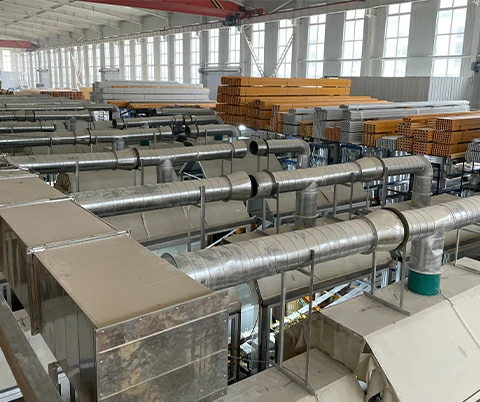loading...
- No. 9, Xingyuan South Street, Dongwaihuan Road, Zaoqiang County, Hengshui, Hebei, China
- admin@zjcomposites.com
- +86 15097380338
- Welcome to visit our website!
fiber reinforced plastic rod
Fiber Reinforced Plastic Rods A Comprehensive Overview
Fiber reinforced plastic (FRP) rods have emerged as a revolutionary material in various industrial applications due to their unique combination of strength, lightweight characteristics, and resistance to corrosion. FRP is made by embedding fibers, such as glass, carbon, or aramid, within a plastic matrix, creating a composite that excels in performance compared to traditional materials like steel or aluminum.
One of the primary advantages of FRP rods is their significant strength-to-weight ratio. This makes them an ideal choice for applications where lightweight materials are crucial, such as in aerospace, automotive, and marine industries. The use of FRP rods allows for substantial reductions in weight without compromising structural integrity, resulting in improved fuel efficiency and enhanced performance.
Corrosion resistance is another compelling feature of FRP rods. Unlike metal rods that can suffer from rust and degradation when exposed to harsh environments, FRP rods are unaffected by moisture, chemicals, and environmental stressors. This property makes them particularly valuable in construction, infrastructure, and chemical processing industries, where materials are regularly exposed to aggressive conditions.
In the construction sector, FRP rods are increasingly used as reinforcement in concrete structures. They are preferred over traditional steel reinforcement bars (rebar) due to their non-corrosive nature and ability to reduce the overall weight of concrete elements. This not only lowers the costs associated with transportation and installation but also extends the lifespan of structures, providing long-term durability with minimal maintenance.
fiber reinforced plastic rod

The versatility of fiber reinforced plastic rods also extends to customizable properties
. Manufacturers can modify the types of fibers and resins used, allowing for specific adjustments in tensile strength, flexibility, and impact resistance. This adaptability makes FRP rods suitable for a wide range of applications, from sports equipment to medical devices and construction materials.Moreover, the production of FRP rods is environmentally friendly compared to traditional materials. The manufacturing process often incorporates recycled fibers and sustainable resins, reducing waste and minimizing the carbon footprint associated with production. As industries worldwide continue to shift towards sustainable practices, FRP rods are becoming an increasingly popular alternative.
Despite their advantages, it is essential to consider some limitations of FRP rods. The initial cost may be higher than steel or aluminum counterparts, which can deter some planners and engineers. Additionally, proper handling and installation techniques are crucial to ensuring the structural performance of FRP rods, as they may be more susceptible to damage from improper use.
In conclusion, fiber reinforced plastic rods represent a significant advancement in material science, offering a plethora of benefits such as lightweight construction, corrosion resistance, and versatility. As innovations continue to emerge and industries seek more sustainable options, FRP rods are poised to play an increasingly vital role in the future of engineering and construction. Whether you are in manufacturing, construction, or research, considering FRP rods could lead to enhanced performance and longevity in various applications.
-
The Rise of FRP Profiles: Strong, Lightweight, and Built to LastNewsJul.14,2025
-
SMC Panel Tanks: A Modern Water Storage Solution for All EnvironmentsNewsJul.14,2025
-
GRP Grating: A Modern Solution for Safe and Durable Access SystemsNewsJul.14,2025
-
Galvanized Steel Water Tanks: Durable, Reliable, and Ready for UseNewsJul.14,2025
-
FRP Mini Mesh Grating: The Safer, Smarter Flooring SolutionNewsJul.14,2025
-
Exploring FRP Vessels: Durable Solutions for Modern Fluid HandlingNewsJul.14,2025
-
GRP Structures: The Future of Lightweight, High-Performance EngineeringNewsJun.20,2025
